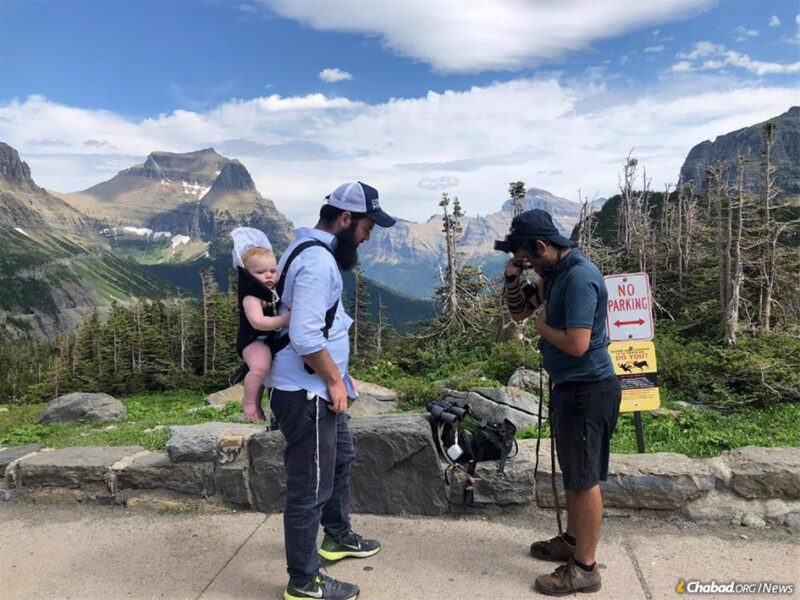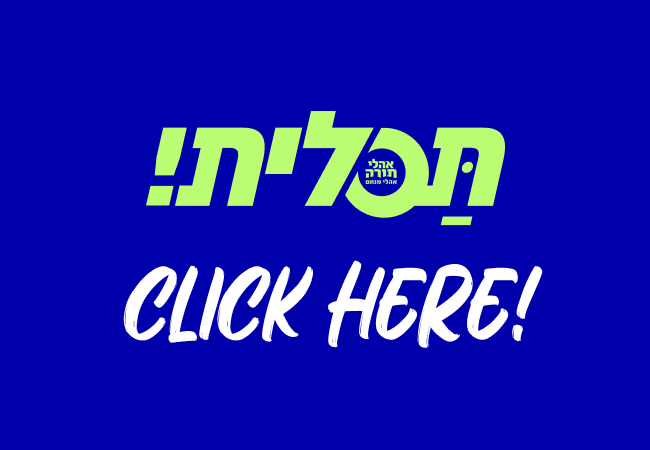
Montana’s Vast ‘Big Sky Country’ Sees Jewish Life Flourishing
by Menachem Posner – chabad.org
Did you hear there’s a Chabad center in Montana, the Western state whose minuscule Jewish community is spread out over the mountains, valleys and vast plains that cover an area the size of Germany? Well, Shavuot will be celebrated this year with services, Torah classes and dairy receptions at all four of the state’s full-time Chabad centers, with plans for a fifth couple to move down in the coming months.
“It’s been amazing to watch Judaism in Montana grow and flourish at Chabad,” says Dr. Sarah Bronsky, a family practitioner who has lived in Bozeman since 1999 and is familiar with small-community Chabad from Salt Lake City, Utah, where she grew up. “They do what no one else does, rolling up their sleeves and bringing an authentic Jewish experience to everyone, no matter how far they live and how little they may practice.”
This ethic is especially important in Montana, where each of the state’s four Chabad centers also serves large swaths of cities, towns and ranches with no other Jewish infrastructure.
For Rabbi Shneur Wolf, who co-directs Chabad of the Flathead Valley with his wife, Chana, that means a lot of time in the car, traveling up to 100 miles south to towns such as Arlee or St. Ignatius or making the trip up north to the Canadian border, where he most recently held a Chanukah party for 30 people in the tiny town of Eureka.
On many of these trips, they end up meeting people along the way, some of whom become Jewishly involved as a result.
Wolf recalls one particular instance when the car containing rabbinical students heading to a Chanukah celebration slipped off the road in the midst of a snowstorm, and more than a dozen passers-by came to help. One of them turned out to be Jewish. His family now has mezuzahs on their doors and is actively involved in Judaism.
In many ways, that anecdote is emblematic of how the Chabad network has been built in the state— one smile at a time, one connection at a time, one mitzvah at a time.

Making History
Montana’s Jewish presence dates back to the 1860s when the Gold Rush brought a small stream of Jewish prospectors, innkeepers, merchants, sheriffs, and others. The Jewish of Montana Territory fully participated in every aspect of Western life and continued to do so after it was declared a state in 1889. In fact, the words of the regional anthem were composed by Charles Cohan, a Jewish journalist from Butte.
Yet, despite its early influence, the Jewish community remained relatively small and isolated. For decades, Chabad would dispatch pairs of rabbinical students, who would drive through the state, bringing with them Jewish books, tefillin and mezuzahs, and a connection to the broader Jewish community.
Nearly 20 years ago when Brooklyn, N.Y.-born Rabbi Chaim Bruk visited the state for the first time as a young rabbinical student, he fell in love with its pristine nature, rugged individualism and room for growth.
Two years later, he returned with his bride, Chavie Bruk, a native of Texas, and they never looked back.

In addition to their own growing family (the couple has adopted five children), they nourished souls across the state, inviting hundreds to their Shabbat table and making it clear that everyone had a place in their hearts.
“I know that even if I would not be Jewish, Chavie would reach out to me and welcome me,” says Bronsky, who swells with pride while telling how her teenage son is often called to complete the minyan for Shabbat services at Chabad-Lubavitch of Montana in Bozeman. “They are the people you want to be friends with—uplifting, positive and so open about how they live their own lives.”

The Building Blocks of Jewish Life
Like Montana’s network of highways, which hug precipitous inclines and meander through hills and valleys, the road to growth was not an easy one, and the path forward was not always clear.
When they came, there was no kosher meat available, no mikvah and not even a full-time rabbi in the state. And the Jews they were to serve were scattered around, mostly unaffiliated and fragmented.
They settled in Bozeman, where the rabbi estimates that some 800 homes contain at least one Jewish person, and started building from the bottom up.
Their first major project was to build the state’s first (and only mikvah), which has since served countless women, including visitors who come to bask in the natural beauty of the Treasure State’s vaunted National Parks.
Since none of the local stores carry kosher meat (or chalav Yisrael dairy products), they arranged for a refrigerated truck to drive up and drop off supplies for them and anyone else in need. It now makes several more stops to serve the state’s other three Chabad centers in Kalispell, Billings and Missoula.
And to bring unity, connection and connectedness to Montana’s scattered Jews, they maintain the Montana Jewish Voice, a full-color publication with news, pictures, recipes, notices of upcoming events and Judaic content from Chabad.org mailed to every known Jewish household in the state.

Besides 500 miles of road, there is a lot that differentiates each of the state’s four Chabad centers.
With at least 800 Jewish homes and located in the dead center of the state, Bozeman is the linchpin of Chabad activities, the location of the mikvah, the largest Chabad center and the base of the Bruks’ activities.
Conversely, Billings is the largest city in the state, with perhaps 400 Jewish homes distributed among a general population of more than 100,000.
The Billings Chabad center, which serves all of eastern Montana, was founded just prior to the High Holidays of 2022 by Rabbi Shaul and Mushky Shkedi.
“Every day we are meeting new people, Jews who thought they were alone,” says Rabbi Shkedi, who grew up in Pittsburgh. “In a community of this size, it’s all about making personal friendships. As I worked on permits for our menorah lighting—the first time Chanukah was celebrated on public property here in Billings—I walked into the wrong building. A security guard saw me, and we started chatting. Turns out his mother was Jewish. This Passover, he ate matzah for the first time in his life.”

Tailor-Made Solutions for Growing Community
Over in Missoula, Rabbi Chezky Vogel says that being in a small town has its advantages. “People know who we are,” says the rabbi, who directs Chabad-Lubavitch of Missoula with his wife, Rochi. “When we go to the store or the library with the kids, people recognize us. When there is a Jewish event, the word spreads. People talk to their neighbors. They know.”
Chabad has become so well-established in the city that they are currently in the midst of purchasing a 4,000-square-foot stand-alone center that will have ample room for Shabbat services, a Jewish library, a social hall, and an entire wing dedicated to early childhood.
And, of course, as with everything they do, they will make sure that things will be welcoming for students at the University of Montana, who participate in almost all their events.
The pandemic and the ability to work from home proved to be a boon for Montana, and Missoula is no exception.
“We get calls almost every day from people who are moving here or have moved already and are looking for a Jewish connection,” says Vogel. “People here are friendly, open and genuinely welcoming, so they fit right in.”

He says that the first wave of Jewish residents in Missoula came in the 1970s and ’80s, mostly wishing to escape the crowding of the East Coast. Now, decades later, many of them are looking to rediscover the Jewish involvement they may have dropped.
With relatively small communities and rapidly shifting demographics, Wolf says that he and his wife must constantly recalibrate their offerings, including a community-wide ski trip this winter. “This summer, we will have more kids than before, so we can open a day camp,” he explains. “When there are more women, we invest more in our Women’s Circle, doing whatever we can to serve the people who are here now in the best way possible.”

According to Bronsky, an observer of Jewish life in Montana for decades, the newest wave of arrivals has caused all communities across the state to swell, especially Chabad, which is already familiar to many from their cities of origin.
“When people see how Chabad has taken off here, they think it’s because they are getting major grants from somewhere,” she notes. “I make it a point to tell them that no, these rabbis and rebbetzins are responsible for everything from programming to finances—and that’s part of what makes them so successful!”

















